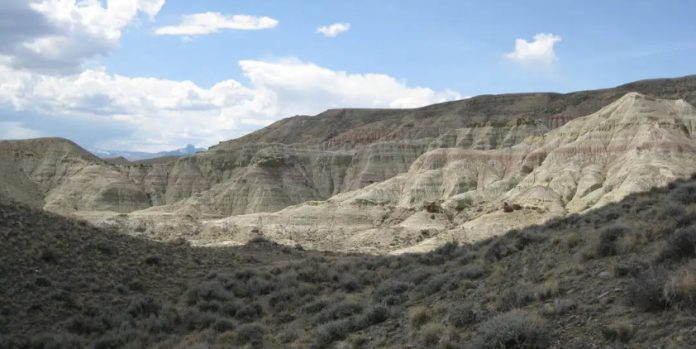EDITORS NOTE: Last week, the media went agog, (examples: here, here, and here) over a flawed study in Proceedings of the National Academy of Science (PNAS) that claimed wet bulb temperatures (essentially the heat index, from combined temperature and humidity effects) will become too hot for human habitation in parts of the world. The only problem is that the media didn’t catch the errors in the paper, Andy May did.
Can extreme heat make parts of the Earth too hot for humans?
Guest Essay by Andy May
In another “How the hell did this paper pass peer-review?” incident we find yet another PNAS absurdity by Daniel Vecellio and colleagues (Link), that is described by a truly awful summary in Science Daily here. The paper tells us, correctly, that any wet-bulb temperature above 35°C is dangerous for humans. This particular temperature is dangerous because that is when our bodies lose their ability to cool themselves. The wet bulb temperature is the lowest temperature that air can be cooled to by the evaporation of water. Consider it our external body temperature, in direct sunlight, while sweating.
The table in figure 1 shows how this temperature relates to relative humidity and air temperature in the shade. Danger is reached around 36°C (97°F) at 55% relative humidity. Fortunately, while this situation can occur, it will not occur for long or over a wide area because deep convection will start spontaneously. Deep convection is a steep updraft, caused by warm, humid air (humid air has a lower density than dry air), rising rapidly and forming clouds. This process is nearly perpetual in the ITCZ or the intertropical convergence zone, which is where the Sun is directly overhead at noon, or the climatic equator. This zone encircles the Earth.

The values in black are dangerous for work or play outside in direct sunlight. For those who prefer Fahrenheit temperatures, 35°C is about 95°F, 37°C is about 98.6°F, and 32°C is about 90°F. For some perspective, I regularly play golf, in the summer, when the wet bulb temperature is 32°C. When I was younger, I even walked the golf course at those temperatures. Now I use an electric cart and have immediate access to shade. A little wind while driving the cart really helps. I should also note that, while I’m relatively healthy, I am 71 years old. Thus, Vecellio, et al.’s claim that a more realistic upper threshold is 30.6°C for “young, healthy subjects” is belied on every Houston area golf course (we have more than 80) every July and August.
As both articles note, time of exposure to high wet bulb temperatures is important, but clearly a four-hour golf game is OK, with lots of water and frequent breaks in the shade with a light breeze. The Science Daily article quotes the lead author of the paper (Vecellio) as saying: “Heat is already the weather phenomenon that kills the most people in the United States.” This is clearly not true, cold-related deaths far exceed heat-related deaths in the U.S. This CDC study confirms it.
So much for the awful Science Daily article, we return to the peer reviewed PNAS paper. The first problem we notice is that the authors conflate local warming, mainly in the tropics, with the consensus goal to limit global warming to 1.5-2°C. Tropical temperatures don’t change much even over very long geological periods of time, because they are limited by deep convection to less than 30°C, except for short periods and over land where humidity is generally lower.
This is explained well by Sud, et al. (Sud, Walker, & Lau, 1999), Newell and Dopplick (Newell & Dopplick, 1979), Willis Eschenbach (Eschenbach, 2021), and Rick Willoughby (Willoughby, 2021). As Sud, et al. explain, a sea surface temperature of about 28°C is sufficient to drive the surface air to cloud level. This process also occurs over land, but generally requires high relative humidity and higher temperatures. It is well known that average tropical sea surface temperatures over large areas are capped at 30°C (86°F) and that essentially all global warming happens in the higher latitudes, thus the idea in the paper that global warming somehow will push tropical temperatures to dangerous levels is unfounded and physically impossible as long as our oceans and lakes exist.
Our distant ancestors, the first primates, evolved about 56 million years ago during one of the warmest times in the Cenozoic Era. This was the Paleocene-Eocene Thermal Maximum (PETM), when the global average temperature may have been ten degrees warmer than today. Primates not only evolved then, but they also thrived. They spread rapidly around the world according to the fossil record, that we exist today is a testament to their success. Mammal fossils, perhaps even primate fossils, can be found in the Polecat Bench section in Wyoming and in PETM sections in Europe. Clearly, during the PETM, the tropical temperatures could not have been much different than today.
To find another easily falsifiable PNAS paper, so soon after the Leah Stokes’ paper shows something is clearly wrong at PNAS.
The featured image is a photo of the PETM section in Polecat, Wyoming. It was taken by Mark Fisher.
Works Cited
Eschenbach, W. (2021, January 21). A Chain of Effects. Retrieved from Wattsupwiththat.com: https://wattsupwiththat.com/2021/01/21/a-chain-of-effects/
Newell, R., & Dopplick, T. (1979). Questions Concerning the Possible Influence of Anthropogenic CO2 on Atmospheric Temperature. J. Applied Meterology, 18, 822-825. doi:10.1175/1520-0450(1979)018<0822:QCTPIO>2.0.CO;2
Sud, Y. C., Walker, G. K., & Lau, K. M. (1999). Mechanisms Regulating Sea-Surface Temperatures and Deep Convection in the Tropics. Geophysical Research Letters, 26(8). Retrieved from https://agupubs.onlinelibrary.wiley.com/doi/pdf/10.1029/1999GL900197
Willoughby, R. (2021, May 23). Ocean Surface Temperature Limit-Part 1. Retrieved from Wattsupwiththat: https://wattsupwiththat.com/2021/05/23/ocean-surface-temperature-limit-part-1/
















